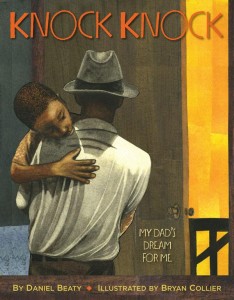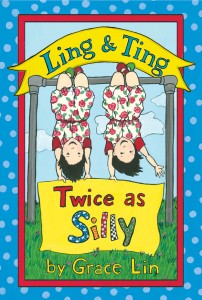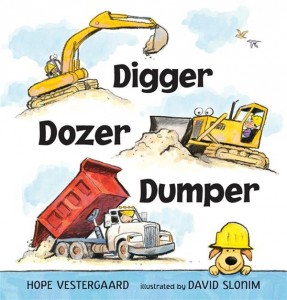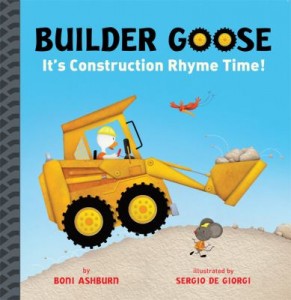The Cybils 2014 Finalists for Fiction Picture Books
 I was honored to be a first round judge for the 2014 Cybils Awards in the fiction picture book category. I was one of seven people who volunteered to read more than 229 picture books and to argue for the books we thought were outstanding. The reading part was easy. Debating the merits of books I love with other well-read, highly intelligent, articulate bloggers – way tougher than I thought. Some books that I adored didn’t click with other readers, and some of their favorites I didn’t like. The process again reminded me of how personal our connection with books is, and why we need such a wide variety in our libraries.
I was honored to be a first round judge for the 2014 Cybils Awards in the fiction picture book category. I was one of seven people who volunteered to read more than 229 picture books and to argue for the books we thought were outstanding. The reading part was easy. Debating the merits of books I love with other well-read, highly intelligent, articulate bloggers – way tougher than I thought. Some books that I adored didn’t click with other readers, and some of their favorites I didn’t like. The process again reminded me of how personal our connection with books is, and why we need such a wide variety in our libraries.
In the end, we were able to choose seven fiction picture books to move on to Round 2. Good luck to those judges on choosing just one of these worthy contenders! See the list of all the Cybils finalists here.
Here’s one of the books that made me want to hug the author, the illustrator, the editor, and everyone involved in making it: Knock Knock: My Dad’s Dream for Me written by Daniel Beaty and illustrated by Bryan Collier.
Every morning, a dad knock-knock’s on his son’s bedroom door to tell him “I love you”. One morning the dad doesn’t knock, and the boy writes a letter asking why his father isn’t around any more. The letter the dad writes back about the hopes he has for his son’s bright, beautiful future is full of hope and inspiration. Any child dealing with the absence of a parent, due to incarceration or other circumstances, will find strength in this beautifully illustrated book. This is one of those books that may make a powerful difference in a child’s life.
Some of your kids need to hear this book because it will act as a mirror of their experience. Other kids need this book as a window into the experience of others. All kids need to know that a bright future lives within them no matter their circumstances.
Because this story can touch on strong, possibly painful emotions, it might be one you simply read aloud to your class and skip a follow-up lesson. Go ahead and let your kids see you get choked up, which you undoubtedly will, because powerful books do that to readers. Consider encouraging students to write letters – to someone they miss, to their future selves, even to you. If you let kids know they can write letters to you that will be absolutely private, and that you’ll write back to them, you may open incredible doors of communication with kids who need it.
Read More
Ling & Ting & Grace & Me!
 If you heard a loud, squeeing sound on November 11, that was me. I’m thrilled because the newest book in an early chapter book series I adore was just released: Ling & Ting: Twice as Silly by Grace Lin. I’m twice as excited about this book, because I wrote the Ling & Ting story starters that you can download and use with your students for FREE and it’s on Grace Lin’s website! My work on gracelin.com! I’m swooning to be linked with such a rock star!
If you heard a loud, squeeing sound on November 11, that was me. I’m thrilled because the newest book in an early chapter book series I adore was just released: Ling & Ting: Twice as Silly by Grace Lin. I’m twice as excited about this book, because I wrote the Ling & Ting story starters that you can download and use with your students for FREE and it’s on Grace Lin’s website! My work on gracelin.com! I’m swooning to be linked with such a rock star!
Grace Lin also has an exceptionally cool contest going on. Kiddos who are inspired to make up a silly story the way Ling and Ting do can receive a free Ling & Ting print and be entered to win a Pocket Pacy! The details are all available on Grace Lin’s blog.
Early chapter books like the Ling & Ting books are wonderful for building fluency. Each chapter is only a few pages long, so it’s easy to turn a chapter into a Readers’ Theater script. Also, you can work on comprehension skills (go, Key Ideas & Details and even Integrating Knowledge & Ideas if you compare two or more of the books) by making a Ling & Ting Venn diagram. Ling and Ting are twins, but we find out in their first book Ling & Ting: Not Exactly the Same that identical twins don’t have identical personalities. If you have twins in your classroom, they will be especially delighted to help point out the way the girls are different as well as the ways they are the same!
This month I’m presenting seminars in Oklahoma City, Dallas, Houston, Anaheim, and Pasadena. All in one week. I’ll be very thankful this Thanksgiving to be done traveling for 2014. As I count my blessings, I’ll also give thanks for you, for letting me share my passion for kids’ books with you.
P.S. Thanks Curious City for connecting me with Grace Lin. I’m still grinning!
Read MoreDig in to fun summer books!

 These books are so much fun I couldn’t choose just one! Now that summer is here, I’m looking for books that encourage outdoor play. Here are two books that will have kids scurrying to the sandbox: Digger, Dozer, Dumper written by Hope Vestergaard and illustrated by David Slonim and Builder Goose: It’s Construction Rhyme Time! by Boni Ashburn and illustrated by Sergio de Giorgi.
These books are so much fun I couldn’t choose just one! Now that summer is here, I’m looking for books that encourage outdoor play. Here are two books that will have kids scurrying to the sandbox: Digger, Dozer, Dumper written by Hope Vestergaard and illustrated by David Slonim and Builder Goose: It’s Construction Rhyme Time! by Boni Ashburn and illustrated by Sergio de Giorgi.
Both of these books have poems about construction vehicles, so by sharing them together you’ll not only hit Range of Reading, you’ll have great compare/contrast discussions which hit Integration of Knowledge & Ideas. (Also, both are written by Michigan authors, so shout out to the proud Mitten State!) I love that these books both give real information about how these machines work within fun, catchy poems. Dig these favorites:
Backhoe (from Digger, Dozer, Dumper)
The backhoe’s two machines in one:
a useful little truck.
His front end pushes dirt and rocks:
his back end digs out muck.
Heave Ho! Let’s Go! (from Builder Goose)
This old crane,
it swings wide!
It takes pallets for a ride.
With a heave ho, let’s go,
swing it back for more.
Hoist it high and watch it soar!
Once you and your crew have enjoyed the construction poems, everyone will want to go dig in the sandbox and build, dig, measure, and pour. Extend the learning and develop fine motor skills with these fun activities I found on preschoolexpress.com, Jean Warren’s genius website: hammer golf tees into firm Styrofoam pieces, screw screws into bars of soap, and build edible structures with graham crackers and frosting, peanut butter, or cream cheese. Happy reading!
Read More
Battle Bunny
 Happy February! This time last year, I was celebrating the sale of my first picture book, GROUNDHOG’S DILEMMA, to Charlesbridge. This February 2nd, I came home from a week of presenting seminars to a cool surprise: my husband (author/illustrator Matt Faulkner) just received the official layout of the book so he can begin making the art! Woohoo!
Happy February! This time last year, I was celebrating the sale of my first picture book, GROUNDHOG’S DILEMMA, to Charlesbridge. This February 2nd, I came home from a week of presenting seminars to a cool surprise: my husband (author/illustrator Matt Faulkner) just received the official layout of the book so he can begin making the art! Woohoo!
Of course, I won’t see any of the art until it’s passed my editor’s approval. In the publishing world, authors don’t get to communicate with the illustrators. I just happen to live with my illustrator. And because I’d like to continue living with him, I can’t watch over his shoulder as he draws my characters, because I’d be tempted to give helpful comments like, “Maybe his cheeks should be a little chubbier, and maybe you should….” So Matt will make his magic in his studio and I will try not to peek until my editor says I can!
Those of you came to my seminars last week have already seen my new favorite book: Battle Bunny written by Jon Scieszka and Mac Barnett (and Alex) with pictures by Matthew Myers (and Alex). Kids who love the humor of Captain Underpants will go nuts for this book, and you can use it to teach the Core Standard of Craft & Structure.
When you show students the cover, they might think this book has been defaced. Well, yes and no. Battle Bunny is supposed to look drawn on and scribbled over – that’s the brilliant premise of this book. A kid named Alex is supposedly given a sappy-sweet book called “Birthday Bunny” from his Gran-Gran. Alex transforms the book by crossing out words, writing his own words, and adding crazy details to the pictures. For instance, the line “Birthday Bunny started on his path, hopping through the trees” is rewritten as “Battle Bunny started on his Evil Plan, chopping through the trees” and we see the cute birdie in the tree now has a speech balloon saying “You will fail!”
Revising! Editing! Transformative writing! After you’ve talked with your students about the authors’ and illustrator’s craft of word choice, art design, etc. that add layers to the book, go to mybirthdaybunny.com. There’s a free lesson plan for teachers, and I love that you can print off the “original” sweet version of the story for kids to change. If you are super-brave, buy some beat-up books from the library’s used book sale or from a thrift store and let your students revise them. Just make it clear which books can be written in and which of your books are off-limits!
Read More






